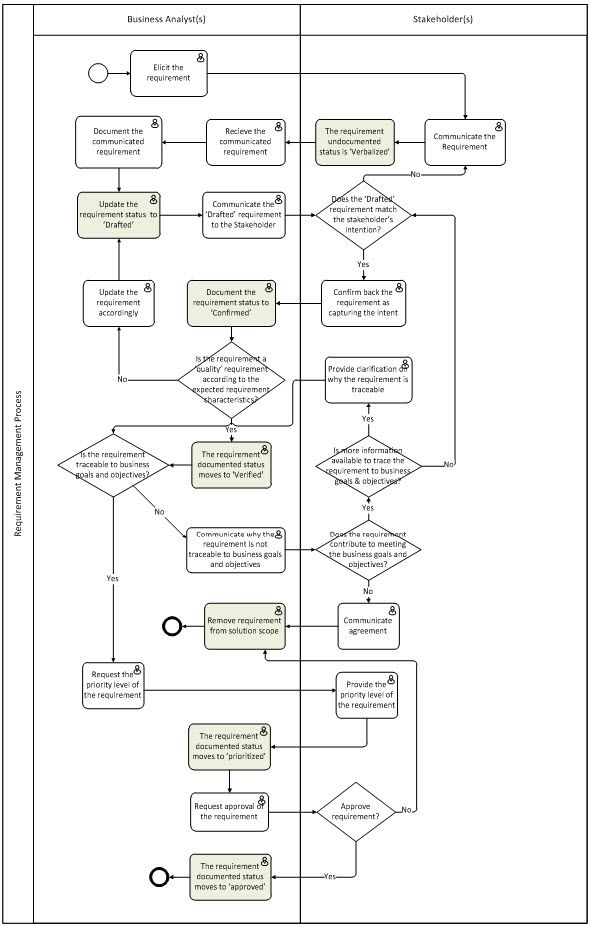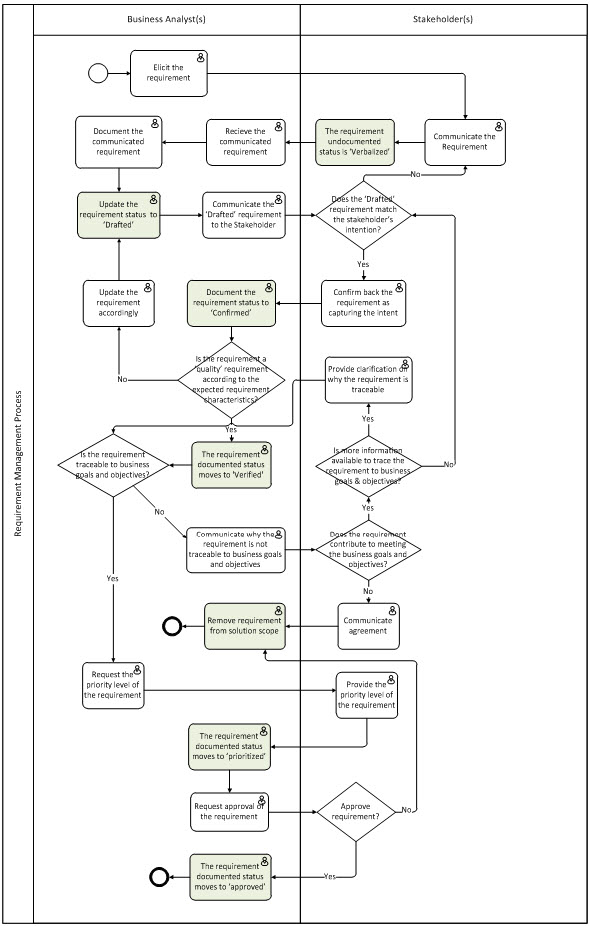
Trust & the Requirements Management Process
Two key behavioral characteristics a Business Analyst must have are being ethical and the ability to establish trust. Ethics contribute to the business analyst’s establishing trust with the end users, sponsor, project manager, technical resources and other key stakeholders. Trust enables the business analyst to elicit requirements around issues that are sensitive and to ensure that concerns within the project can be addressed.
The BABOK v2.0 references measures of trustworthiness include:
- Stakeholders involving the business analyst in decision-making.
- Stakeholder acceptance of the business analyst’s recommendations.
- Willingness of stakeholders to discuss difficult or controversial topics with the Business Analyst.
- Willingness of stakeholders to support or defend the business analyst when problems occur.
The organization’s culture can also have an influence on trust for the business analyst. I little while ago I worked for a firm who was going through a series of layoffs where the individuals in the organization were questioning the organization’s ability to meet their job security expectations. Many of the meetings I attended or facilitated included employees expressing their concern and doubt in the likelihood that the company would be solvent in the near future. The culture was one of mistrust.
When I completed my work at that firm, I found that even though the employee’s attitude towards the company was untrusting, I could establish trust with them by behaving with ethics in a trustworthy manner according to a repeatable, communicated process.
Having a repeatable method for establishing trust, no matter what the organizational culture expresses, can build business analyst confidence. This article’s purpose is to share the process and principles that I’ve found to be effective within multiple companies from large publicly traded to large not for profits for managing the requirements process from verbalized to approved. The terms and classifications referenced are from the BABOK v2.0 for terminology continuity. The process documentation and other supporting information have been created from my experience.
Process Benefits
This process builds trust in the following ways within the requirements’ phase
- The process facilitates consistent communication with Stakeholders
- The process facilitates open communication with Stakeholders
- The process alleviates uncertainty that the Business Analyst is capturing the stakeholder’s intent
- The process identifies when stakeholder’s time is required to meet the project expectations
- The process eliminates uncertainty on what should happen next with a requirement for the Business Analyst
Concept: Requirement Status
The status of the requirement is a classification of an individual requirement which allows Business Analysts and Stakeholders to understand the steps that have been applied to that requirement and to understand where the requirement is within the Requirements Management Process.
The following are valid requirement ‘statuses’
- Verbalized Requirement – the Stakeholder has expressed the requirement verbally
- Drafted Requirement – the Business Analyst’s documented understanding of the stakeholder’s intentions
- Confirmed Requirement – the stated, documented requirement matches the stakeholder’s intentions
- Verified requirement – the confirmed requirement is of sufficient quality
- Validated Requirement – the requirement will deliver value to stakeholders and aligns with the business goals and objectives
- Prioritized – the requirement has a priority assigned to it
- Approved Requirement – The Stakeholders agree the requirement can leave the analysis phase
The Requirement Management Process
The following requirements management process takes a requirement through from verbalized to approved during interaction between the Business Analyst(s) and Stakeholder(s).
Driving Trust Higher in the Process
Within this process I’ve found that;
- Once you’ve gotten to the prioritization step, the % of requirements which do not get approved is minimal.
- When you as a BA share the required time and then take that amount of time, trust is increased.
- When Stakeholders share the time needed and then take that amount of time, trust is increased.
- The process is applicable no matter what size of your organization
- You can move through the steps faster with practice
Don’t forget to leave your comments below.
